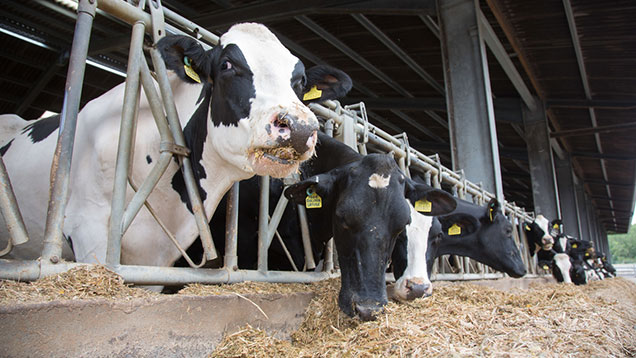Cows exposed to IBR virus ‘produce less milk’
 © Tim Scrivener
© Tim Scrivener Dairy cows exposed to the virus that causes infectious bovine rhinotracheitis (IBR) produce 2.6 litres less milk a day, the results of a recent study show.
The study, carried out by the animal health and welfare consultancy RAFT Solutions, compared the performance of cattle with antibodies to IBR to those without over a two-year period in an average-sized, year-round-calving pedigree Holstein dairy herd in the north of England.
It found:
- Dairy cows exposed to BHV-1 (bovine herpes virus 1 infection) produced 2.6 litres less milk per day through the entire lactation
- This was despite the absence of any clinical signs of disease in most animals
- At current milk prices this equates to costs of £200 a cow a year
What is IBR?
- IBR – caused by the BNV-1 virus – is an severe upper respiratory tract disease that can lead to pneumonia.
- Highly-contagious, the disease is mainly spread by nose-to-nose contact.
- Infection is associated with a drop in milk yield, reduced fertility and abortions.
- In many cases, IBR will be present without herd managers being aware of it.
The farm selected for the study ran a closed herd with good biosecurity and high health status. Blood tests and bulk milk samples were carried out routinely. Because regular diagnostic tests showed the herd was clear of the disease, the herd was not vaccinated.
But in 2010, concerns about IBR were raised after three cows aborted.
Investigations revealed the virus had spread to 70% of the cows in the herd.
The route of entry is still unknown, although it could have spread from neighbouring cattle or been brought on to the farm on clothing.
Jonathan Statham, a partner at Bishopton Veterinary Group and CEO of RAFT Solutions, said: “At current milk prices, the cost of subclinical IBR was shown to be as much as £200 a cow a year, about twice the median cost of all veterinary and medicine inputs a cow a year.
“These findings underline the importance of monitoring subclinical infectious disease in dairy herds as part of herd health and production management. The financial cost of disease should also motivate dairy farmers to implement robust biosecurity and biocontainment plans on their farms and give due consideration to marker vaccination programmes for their cattle.”
